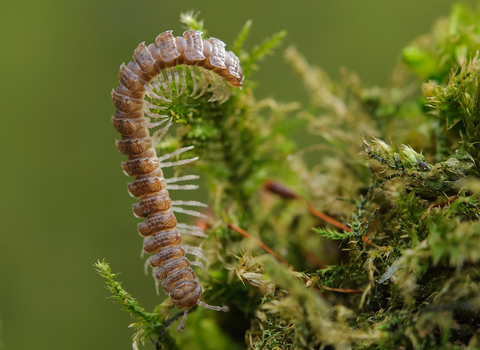
Flat-backed Millipede ©northeastwildlife.co.uk
Flat-backed millipede
Found in compost heaps and under stones in gardens, the flat-backed millipede is a common minibeast. It is an important recycler of nutrients, feeding on decaying matter.
Scientific name
Polydesmus angustusWhen to see
January to DecemberSpecies information
Category
Statistics
Length: 2.4cmCommon.
